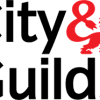Safety on construction sites is an incredibly important topic at all times, but it is always good during construction safety week to discuss it in more detail. Construction work is one of the most dangerous activities in the world, and it remains a leading cause of injury and death among workers worldwide. With this in mind, safety on construction sites should be taken seriously, as it can mean the difference between life and death for the people involved.
Construction Site Safety
There are several steps that can be taken to ensure safety on construction sites, from the use of personal protective equipment (PPE) to the proper maintenance and inspection of tools and machinery. PPE is an invaluable tool in preventing injury, as it provides workers with a physical barrier against potential hazards. In addition, all machinery and tools used on the job should be inspected regularly to ensure they are in proper working condition. Finally, employers and supervisors should provide regular safety training for workers to teach them how to identify potential hazards and avoid them.
Overall, safety is a priority when it comes to construction work. By taking the necessary steps outlined above, employers can help ensure that their sites are safe for workers and help to prevent injuries and fatalities on the job. With this in mind, employers should make sure that safety is at the forefront of their minds when it comes to construction work. Doing so could mean a difference between life and death for all involved.
In addition to these steps, employers must also ensure that their construction sites follow applicable safety regulations and laws. Many countries have strict regulations for construction sites, and if these are not followed correctly it could lead to serious penalties or even criminal charges. It is important for employers to familiarise themselves with the safety regulations in their area and ensure they adhere to them at all times.
When it comes to safety, prevention is always the best strategy. Employers should regularly review their construction sites and procedures to identify potential hazards and take steps to reduce or eliminate them as much as possible. Regular inspections by qualified professionals can also help to ensure that safety standards are maintained on construction sites. Ultimately, it is up to employers to keep their workers safe from harm when it comes to construction work. By taking the proper steps, they can help ensure that their sites are safe and prevent accidents from happening in the future.
Finally, employers should also be aware of mental health issues on construction sites. Construction workers often face high levels of stress and anxiety, which can lead to physical and mental health problems. Employers should make sure to provide their workers with adequate support and resources to ensure their mental health is taken care of, as this can ultimately help keep them safe on the job.
Safety on construction sites is an essential topic that should not be overlooked. By taking the necessary steps outlined above, employers can help protect the safety of their workers and ensure that construction sites are safe for everyone involved. Doing so can make all the difference when it comes to life-and-death situations, which is why it should always be prioritised.
SMSTS & SSSTS Courses
Safety at work is a priority for any employer, and taking the right steps to ensure safety is essential. One of the most effective ways to do this is through SMSTS or SSSTS courses. These courses provide employers with an in-depth knowledge of health and safety regulations, as well as practical tips on how to create a safe working environment for their employees. By taking one of these courses, employers can help improve the safety standards on their worksites and protect workers from potential harm.
SMSTS (Site Management Safety Training Scheme) and SSSTS (Site Supervisor Safety Training Scheme) are two widely recognised training programmes that provide individuals with extensive knowledge about health and safety regulations in construction sites. The course covers topics such as risk assessment, accident prevention, managing contractors safely and understanding legal requirements when it comes to workplace health & safety laws. It also provides practical advice on how to identify hazards in a construction site environment, so that they can be avoided or minimised where possible. Additionally, both SMSTS & SSSTS Courses offer participants an understanding of the importance of communication within a team setting – which helps ensure everyone has access to accurate information regarding Health & Safety procedures.
Health & Safety NVQs
In addition to SMSTS and SSSTS courses, employers can also utilise health & safety NVQs to improve safety on their construction sites. These qualifications offer a more hands-on approach to training, allowing workers to demonstrate their skills and knowledge in real-life situations. NVQs in health and safety cover a range of topics, from risk assessment to hazard identification, and are designed to help workers develop the practical skills needed to maintain a safe working environment. In fact, research has shown that workers who have completed health and safety NVQs are more likely to operate safely on construction sites, resulting in fewer accidents and injuries. By investing in NVQ training for their workers, employers can ensure that the highest safety standards are met on their construction sites, ultimately protecting the wellbeing of their employees and minimising the risk of legal liabilities.
If you still have any questions regarding our CITB courses or health & safety NVQs, then do not hesitate to get in touch.
Phone – 020 3488 4472
Email Enquiries@localhost/cst
Email Admin@localhost/cst



